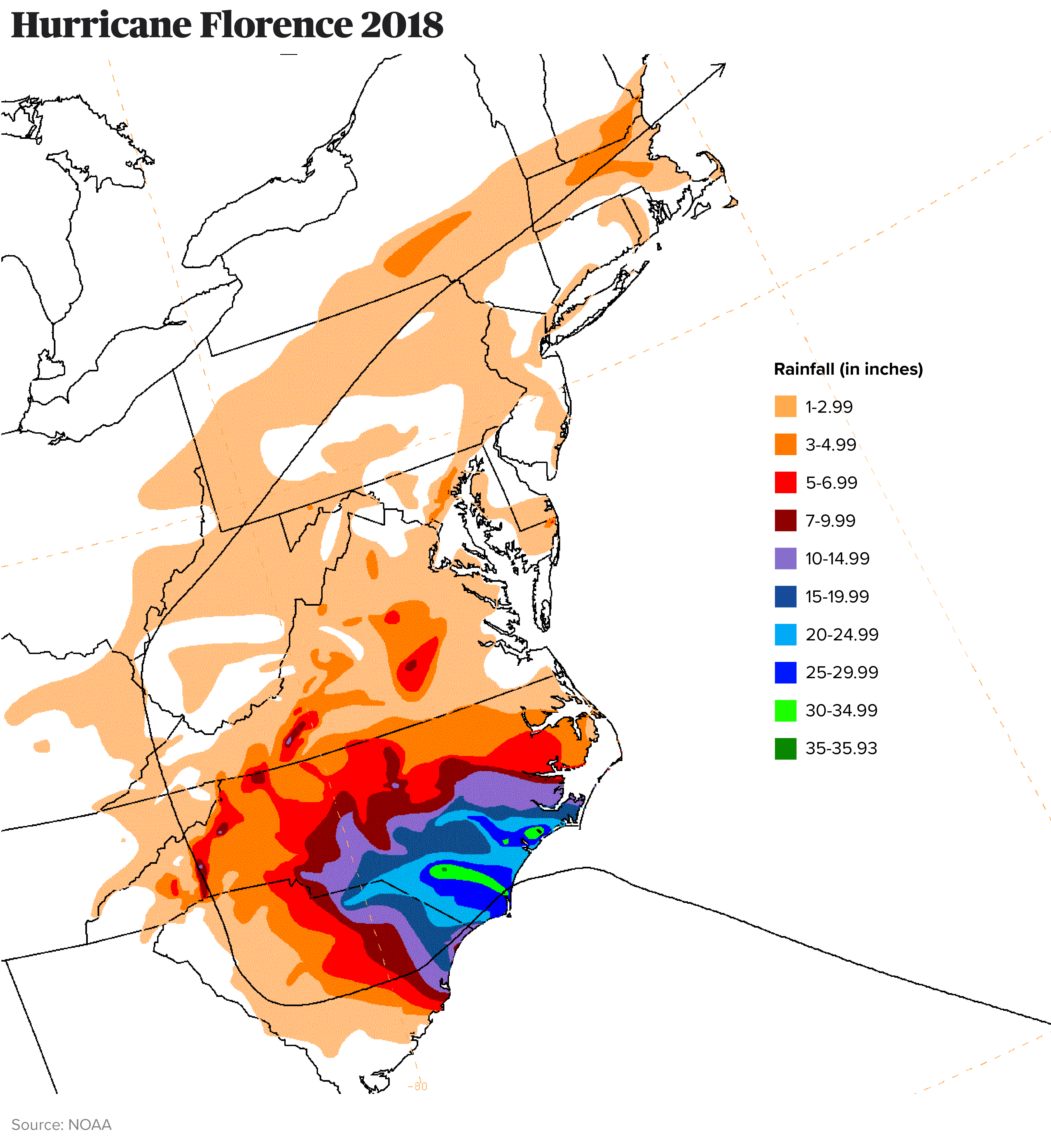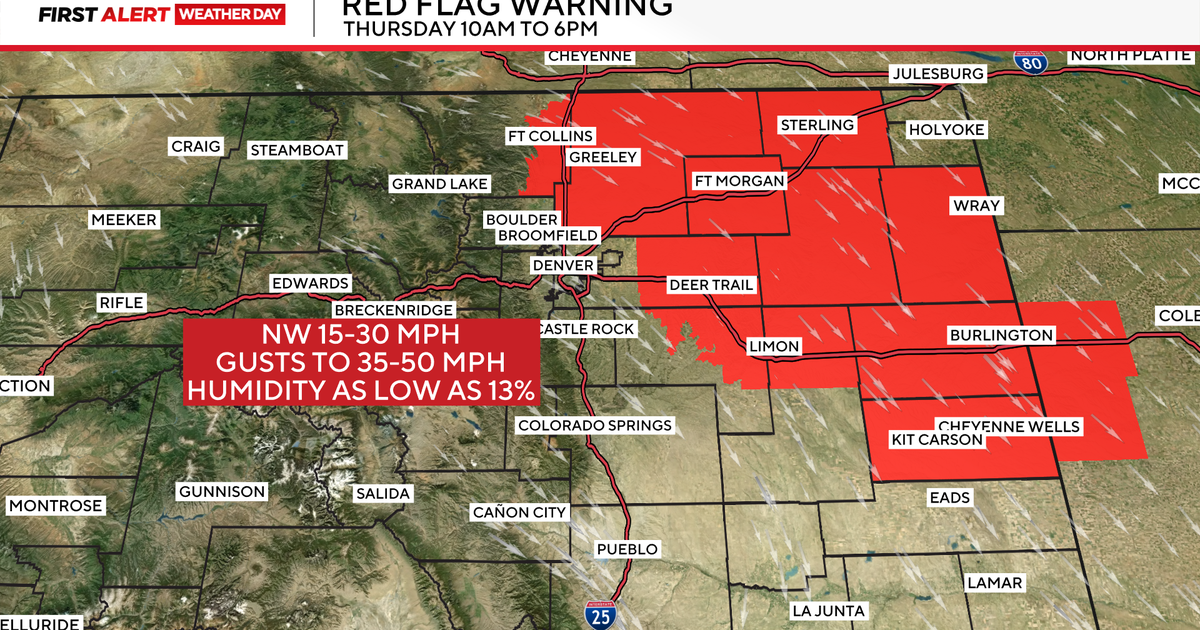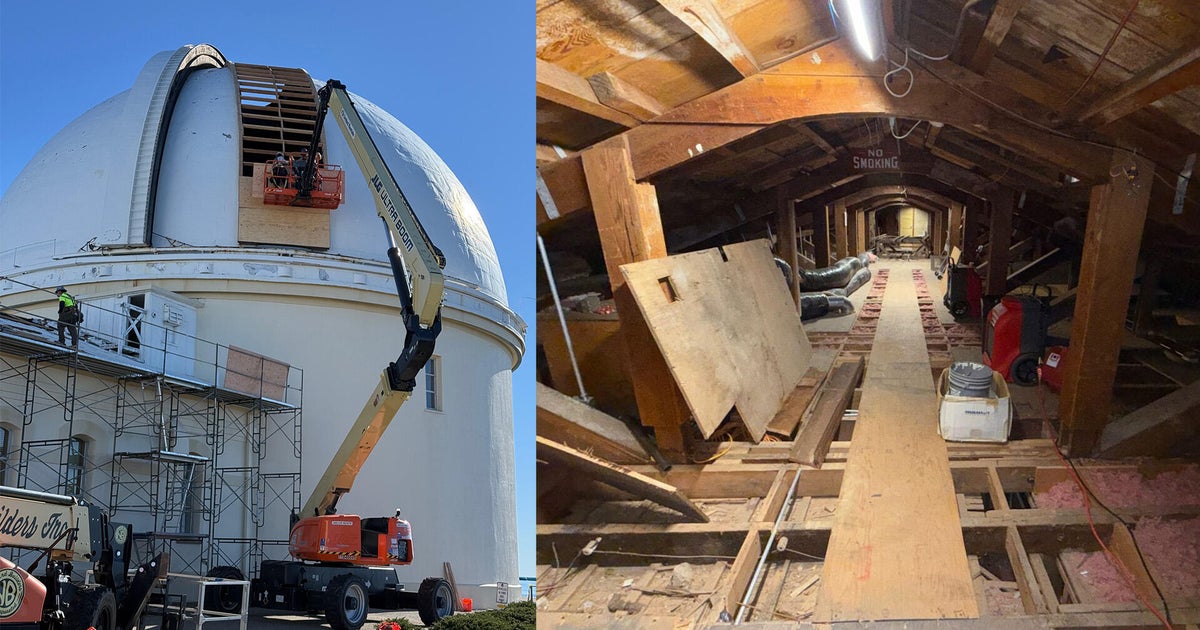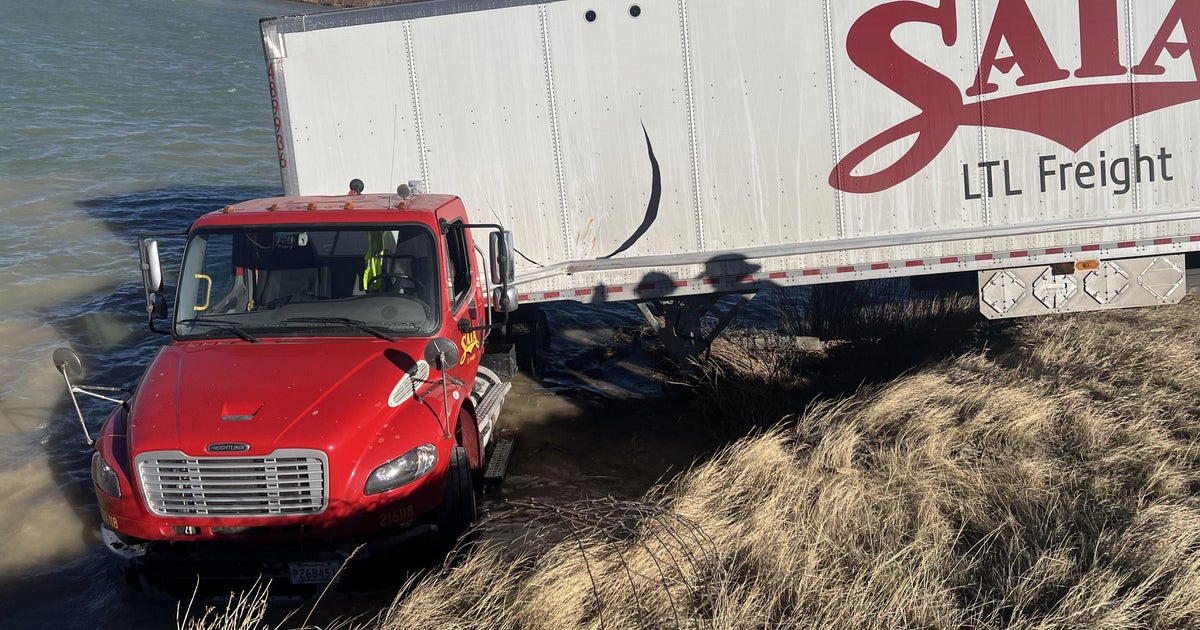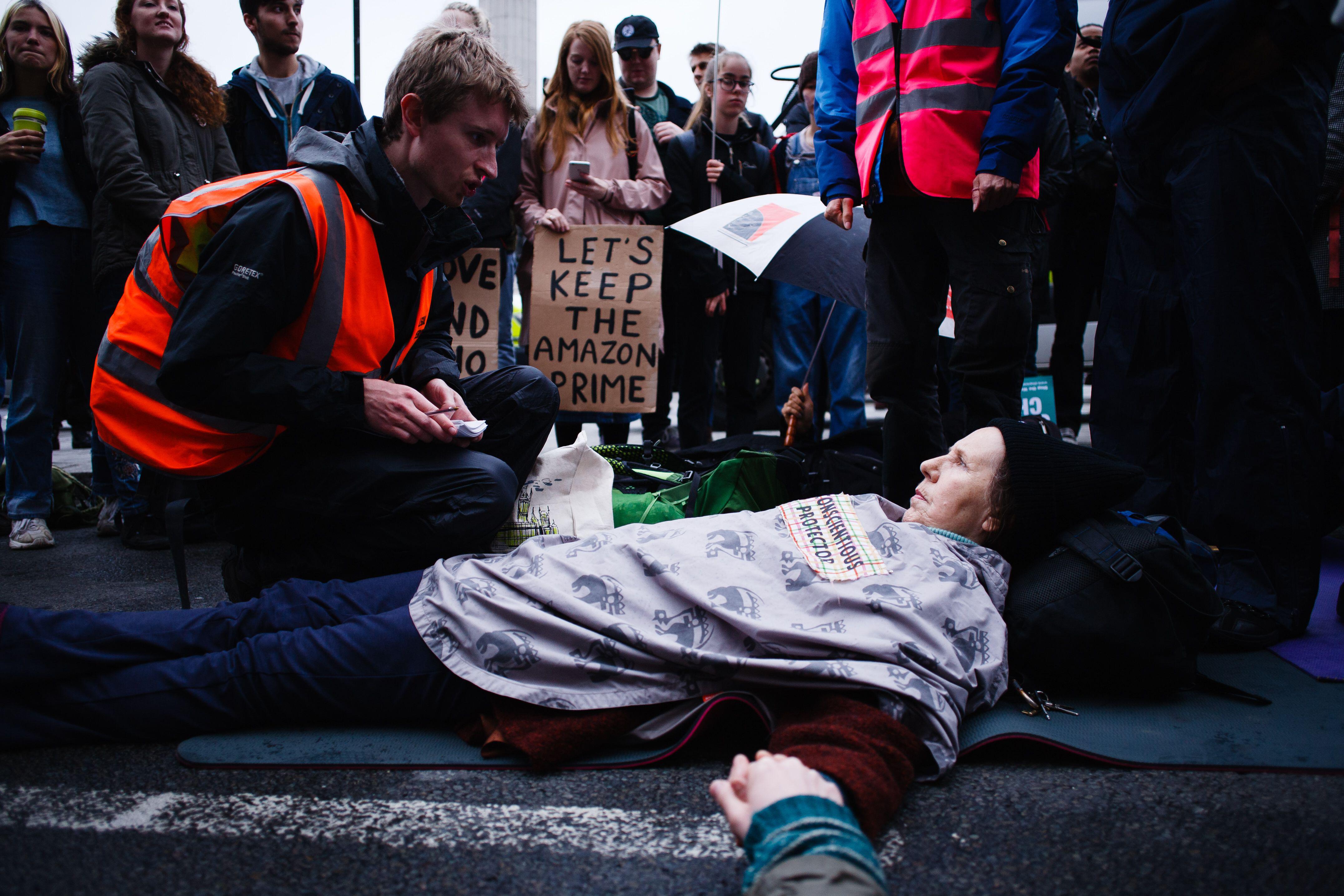Why future hurricanes could bring flooding to millions more Americans
Hurricanes are bringing more rainfall than ever before, mainly due to climate change. With oceans absorbing an estimated 91% of the excess heat caused by greenhouse gas emissions, waters are warming at unprecedented levels. Hotter oceans provide energy that enables hurricanes to rapidly intensify and drop extreme amounts of precipitation.
Traditionally, hurricanes are examined by wind speed. The current hurricane warning system, known as the Saffir-Simpson Hurricane Scale, is a 1 to 5 rating that is based upon the maximum sustained wind of a storm. The scale is best used to predict property damage related to wind, but the scale does little to inform the public about potential flooding.
Warmer oceans can help hurricanes rapidly intensify as they approach land, meaning the wind can increase more than 35 mph in a 24-hour period, turning that storm from a Category 1 into something much higher. But hot oceans also feed moisture into the atmosphere, which increases the amount of precipitation that accompanies a storm. Current scientific modeling predicts rainfall rates will increase between 10-15% on average for most storms as the Earth approaches 2 degrees Celsius of warming.
Already, many hurricanes that have made landfall in the United States in the past 10 years have demonstrated rapid intensification and extreme levels of precipitation that have devastated communities. Hurricanes Harvey, Florence, and Ida produced catastrophic rainfall that caused record-level flooding, mainly inland:
Hurricane Harvey rapidly intensified into a Category 4 storm in 2017 with some areas of Texas receiving as much as 51 inches of rain over five days.
Hurricane Florence made landfall as a Category 1 and caused upwards of 35 inches of rainfall in several locations when it moved slowly across North and South Carolina in two days in 2018.
Hurricane Ida rapidly intensified multiple times before making landfall in 2021 as a Category 4 on the Louisiana coast, but the storm produced historic flooding as far away as New York and New Jersey as it traveled up the East Coast, leading to the drowning deaths of 36 people.
As climate change transforms today's hurricanes into stronger and wetter storms, the old Saffir-Simpson scale is less accurate in predicting damage and danger because it only addresses a storm's wind speed and omits a hurricane's flood potential. Researchers have developed an "extreme rain multiplier" metric to be included with storm reports, but the National Hurricane Center has not formally incorporated a rainfall metric into its projections. Such a warning could become necessary.
A CBS News analysis of data from First Street Foundation, a research group specializing in climate, shows that by 2053, hurricanes could cause flooding damage to more than 19 million properties across the country. The flooding could reach areas not seen in modern history.
However, federal flood insurance would only cover properties in specific flood zones, leaving 75.3% of property owners left to foot the bill. With 39 tropical storms, including hurricanes, causing more than $1.2 trillion in damage across the U.S. in the last 20 years, these storms continue to be the costliest and most damaging type of weather event.

